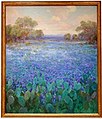
The Eskenazi Museum of Art at Indiana University opened in 1941 under the direction of Henry Radford Hope. The museum was intended to be the center of a “cultural crossroads,” an idea brought forth by then-Indiana University President Herman B Wells. The present museum building was designed by I.M. Pei and Partners and dedicated in 1982. The museum's collection comprises approximately 45,000 objects, with about 1,400 on display. The collection includes items ranging from ancient jewelry to paintings by Pablo Picasso and Jackson Pollock. In May 2016, after the announcement of the largest cash gift in the museum's history, the museum was renamed the Sidney and Lois Eskenazi Museum of Art in honor of Indianapolis-based philanthropists Sidney and Lois Eskenazi. The museum is located on the Indiana University Bloomington campus at 1133 E. Seventh Street.

Pompeo Luigi Coppini was an Italian born sculptor who emigrated to the United States. Although his works can be found in Italy, Mexico and a number of U.S. states, the majority of his work can be found in Texas. He is particularly famous for the Alamo Plaza work Spirit of Sacrifice a.k.a. The Alamo Cenotaph, as well as numerous statues honoring Texan figures.

Littlefield Fountain is a World War I memorial monument designed by Italian-born sculptor Pompeo Coppini on the main campus of the University of Texas at Austin in Austin, Texas, at the entrance to the university's South Mall. Completed in 1933, the monument is named after university regent and benefactor George W. Littlefield, whose donation paid for its design and construction.
The University of Michigan Museum of Art in Ann Arbor, Michigan with 94,000 sq ft (8,700 m2) is one of the largest university art museums in the United States. Built as a war memorial in 1909 for the university's fallen alumni from the Civil War, Alumni Memorial Hall originally housed U-M's Alumni office along with the university's growing art collection. Its first director was Jean Paul Slusser, who served from 1946 to his retirement in 1957.

The David and Alfred Smart Museum of Art is an art museum located on the campus of the University of Chicago in Chicago, Illinois. The permanent collection has over 15,000 objects. Admission is free and open to the general public.

The Memorial Art Gallery is the civic art museum of Rochester, New York. Founded in 1913, it is part of the University of Rochester and occupies the southern half of the University's former Prince Street campus. It is the focal point of fine arts activity in the region and hosts the biennial Rochester-Finger Lakes Exhibition and the annual Clothesline Festival.

The Snite Museum of Art is the fine art museum on the University of Notre Dame campus, near South Bend, Indiana. With about 30,000 works of art that span cultures, eras, and media, the Snite Museum's permanent collection serves as a rich resource for audiences on campus and beyond. Through programs, lectures, workshops, and exhibitions, the museum supports faculty teaching and research and provides valuable cultural opportunities for students and visitors. Students play an active role in programming in their capacities as gallery guides and as student advisory members.
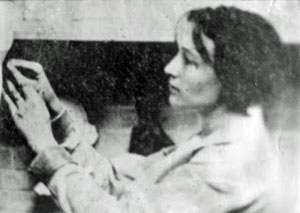
Waldine Amanda Tauch, was an American sculptor. She was chosen by the Texas Centennial Commission to create the monument "The First Shot Fired For Texas Independence".
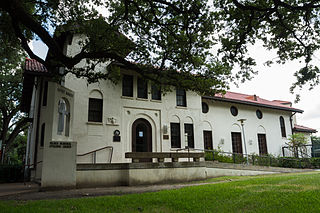
The Edward Albert Palmer Memorial Chapel and Autry House is a two-part building complex located at Rice University in Houston, Texas. It houses the James L. Autry House, which was built in 1921 by the Episcopal Church as a community center for the university.
Frank Teich was a German-born American sculptor, stone carver, and businessman, often referred to as the father of the Texas granite industry.

The Binghamton University Art Museum is an art museum in Binghamton, New York within Binghamton University. Located on the second floor of the main Fine Arts Building on the campus, the museum's permanent collection includes over 3,500 works from various eras and of different media. It includes "paintings, sculpture, prints, photographs, drawings, glass, ceramic, metalwork, manuscript pages and textiles from Egypt, Greece, Asia, Africa, Europe, North America and pre-Columbian cultures." As of 2013, the University Art Museum began an initiative to expand the accessibility of the collection with the greater public and to heighten its commitment to education. The facility is not currently accredited.

Hans Van de Bovenkamp is a Dutch-born American sculptor. Van de Bovenkamp was born in Garderen, Holland in 1938 and immigrated to the United States in 1958. He is best known for his large scale abstract work in bronze, stainless steel, painted steel, and aluminum. Van de Bovenkamp's works are often influenced by myth, symbol, and nature. He is a member of the International Sculpture Center, the New York Sculptors Guild, and the Royal Society of British Sculptors.

A 1926–27 statue of George Washington by Italian American artist Pompeo Coppini, sometimes called George Washington, was installed in northeast Portland, Oregon, United States. The bronze sculpture was the second of three statues of Washington by the artist, following a similar statue installed in Mexico City in 1912 and preceding another installed on the University of Texas at Austin campus in February 1955. The Portland statue was created to commemorate the 1926 sesquicentennial of the Declaration of Independence and dedicated in 1927. It was part of the City of Portland and Multnomah County Public Art Collection courtesy of the Regional Arts & Culture Council. In June 2020, it was toppled by protestors.

George Washington is an outdoor 1955 bronze sculpture by Italian American artist Pompeo Coppini, located on the University of Texas at Austin campus in Austin, Texas, in the United States.
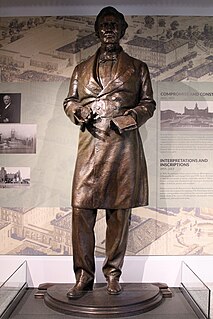
Jefferson Davis is a statue depicting the American-Confederate politician of the same name by Pompeo Coppini. The sculpture was commissioned in 1919 by George W. Littlefield to be included in the Littlefield Fountain on the campus of the University of Texas at Austin. It was installed on the university's South Mall from 1933 to 2015, when it was relocated to the Dolph Briscoe Center for American History in Austin, Texas.
Woodrow Wilson is a sculpture depicting the American president of the same name by Pompeo Coppini. The sculpture was commissioned in 1919 by George W. Littlefield to be included in the Littlefield Fountain on the campus of the University of Texas at Austin. It was installed on the university's South Mall in Austin, Texas from 1933 until its removal in 2015.

Robert E. Lee is an outdoor bronze sculpture depicting the American general of the same name by Pompeo Coppini. The sculpture was commissioned in 1919 by George W. Littlefield to be included in the Littlefield Fountain on the campus of the University of Texas at Austin. It was installed on the university's South Mall in Austin, Texas from 1933 until its removal in 2017.

James Stephen Hogg is an outdoor sculpture depicting the American lawyer and statesman of the same name by Pompeo Coppini. The sculpture was commissioned in 1919 by George W. Littlefield to be included in the Littlefield Fountain on the campus of the University of Texas at Austin. It was installed on the university's South Mall in Austin, Texas from 1933 until its removal in 2017.

Albert Sidney Johnston is an outdoor sculpture depicting the general of the same name by Pompeo Coppini. The sculpture was commissioned in 1919 by George W. Littlefield to be included in the Littlefield Fountain on the campus of the University of Texas at Austin. It was installed on the university's South Mall in Austin, Texas from 1933 until its removal in 2017.
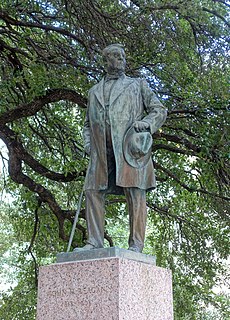
John H. Reagan is an outdoor sculpture depicting the American politician of the same name by Pompeo Coppini. The sculpture was commissioned in 1919 by George W. Littlefield to be included in the Littlefield Fountain on the campus of the University of Texas at Austin. It was installed on the university's South Mall in Austin, Texas from 1933 until its removal in 2017.






